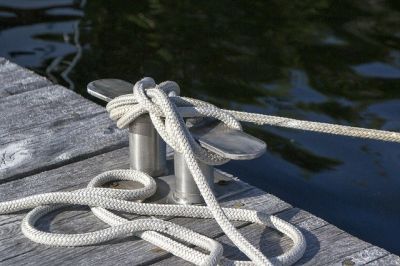5 Yacht Mooring Safety Tips

Most boat owners choose to keep their yachts at home and trailer them to the sea when they need them.
For frequent boaters, this may prove incredibly tedious and expensive.
A proper yacht mooring might be the way to go, but you want to make sure your vessel will be safe while you will be away.
Here are a few basic yacht mooring safety tips.
1. Check the condition of the moorage
Unless you have a personal moorage, it’s pretty much in order to want to know the condition of the prospective commercial moorage before committing. Many marina owners don’t care for their mooring rings or cleats and only replace them when doing an overhaul of their pontoons.
That can be risky to the safety of your prized asset. Instead of taking your chances with providers you know nothing about, find a quality yacht moorage with a good safety track record and a reputation to keep and let them take care of your yacht.
Ask to see their equipment servicing records for good measure.
2. Secure your yacht to multiple fittings
Moorage operators should indicate the maximum weight mooring cleats can handle, which should help you determine if it’s okay to tether your yacht to one.
However, in case the bolts that attach the cleats to the pontoons have rust or the structure’s integrity is compromised in any way, you might want to consider using multiple fittings.
Most marinas don’t offer this luxury, so it’s worthwhile to find a service provider with credibility that covers the limitation.
3. Tether your yacht to the near side of the pontoon
Fitting your rope to a cleat on the far end of your pontoon increases the tether radius. As a result, this causes the vessel to sway more when a wave rocks the marina and increases the chances of physical damage.
Always use the near end and ensure the rope forms a right angle with the pontoon’s length.
4. Use a uniform mooring line
Using different materials and line sizes for leads is a dangerous game. If you use a full-length wire together with a synthetic rope, the stronger material of the two will do the bulk of the work, while the other does virtually nothing.
Whatever material you choose for the breast lines, stern lines, spring lines, and headlines, the girth should be the same for even stress distribution.
5. Keep a constant check on the mooring lines
Most yacht owners don’t check the mooring lines until they need their vessels again. This can be dangerous, as a change in the boat’s ballast condition will necessitate fresh tightening or slacking of the lines.
Most marinas offer this service for free, but it’s good to do it yourself when you have the time. While you’re at it, check the condition of the line, too, to keep the prospect of breakages at bay.
Endnote
Safely keeping your yacht on the water when you are not using it requires a complete understanding of the options at your disposal, the risks you face, the equipment available, and the various mooring techniques.
The above methods are a good starting point for safe yacht mooring.






